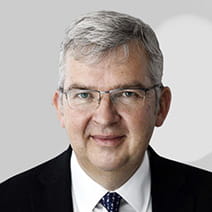For approaching two years, global stock markets have been dominated by the incessant rise of the US mega caps, which have been driven ever higher by the AI frenzy. In 2023, for example, just five stocks - Nvidia, Alphabet, Microsoft, Meta and Amazon - accounted for 50% of the return of America’s 500 largest listed companies.
In July and early August 2024, however, markets, primarily the US and Japan, experienced extreme volatility. Japan fell by 12% in one day, its largest decline since the Asian Financial Crisis. This turbulence was caused by a rapid change in sentiment prompted by a rise in interest rates in Japan, a subsequent increase in the Yen and economic data in the US that was below expectations and created fears of a coming recession.
It was not surprising that the two major equity markets most affected by the pull back were the US and Japan given that they had had such strong growth over the past couple of years. Within a couple of weeks, however, markets had enjoyed a steady recovery and we were back where we started before the earlier volatility.
We believe the fears about the US economy were overdone although the Federal Reserve still faces a challenge to engineer a soft landing. On the positive side, GDP grew at a 2.8% annualised rate in the second quarter, exceeding economists’ expectations of 2%. Recent data showed stronger than expected US retail sales in July.
On the other side, while inflation has fallen, it has been sticky, making the US central bank cautious about pivoting to interest rate cuts. The Fed walks a tightrope between taming inflation and tipping the economy into recession. Failure to act in September could push the biggest economy towards recession; too much of a rate cut could panic investors or open the door to further inflation.
But it can also be argued that there has already been a soft landing in the US. The spike seen in inflation and the monetary policy responses represented two of the biggest shifts the world has seen in a generation or more, yet economies have not cratered. While we may get a technical recession here or there, inflation has fallen towards long-term targets, employment remains robust and economies are on an even keel. Furthermore, the Fed has substantial scope to cut rates.
As such, the market swings seen this summer have not changed our fundamental view of the economy or investment markets. The interest rate cut now widely expected in the US should be supportive for US small caps, for which we raised our Tactical Asset Allocation (TAA ) outlook ranking from a neutral three to a positive four in the first quarter of this year. Being more sensitive to high interest rates than their larger counterparts, small caps have underperformed amid the monetary tightening seen over the last two years to the point they offer attractive valuations.
What the volatility does reiterate is the possibility of a market rotation. If sentiment turns against the mega caps, for example, perhaps because they are unable to continually meet or outperform earnings expectations, then their share prices may start moving downwards. In this scenario, investors will benefit from a diversified portfolio that active managers can help to provide, particularly through exposure to small and mid cap equities, bonds and alternatives.
The concentration risk presented by the handful of mega caps in the US comes at a time when flows into passives have been rapidly growing. It has been reported by NextWealth that the percentage of assets in passive investments within Discretionary MPS has risen from 29% to 43% over the past two years. According to RiF, 39% of advisers’ client assets are now being invested passively compared to 26% in the second quarter of 2021.
It is important, therefore, to be aware of the exposure of client portfolios to the mega caps and the associated risks. The spectacular rise of the handful of mega caps is one reason why we are neutral on the US market as a whole; the degree of their outperformance without a correction at some point would be highly unusual.
Conversely, the UK has become a relative haven of political stability and increasing economic optimism after nearly a decade of uncertainty and this reinforces our confidence about the domestic stock market. This confidence has been driven by valuations and the potential for capital flows. Among the other equity markets we are bullish about are Asia ex-Japan, emerging markets, Japan and US small caps.
In conclusion, we believe the key lesson from all the market developments over the summer is that diversifying client portfolios, patient investing for the long term and a consistent investment process are more important than ever. There are no signs of the potential for rotations ending any time soon.
KEY RISKS
Past performance is not a guide to future performance. The value of an investment and the income generated from it can fall as well as rise and is not guaranteed. You may get back less than you originally invested.
The issue of units/shares in Liontrust Funds may be subject to an initial charge, which will have an impact on the realisable value of the investment, particularly in the short term. Investments should always be considered as long term.
The Funds and Model Portfolios managed by the Multi-Asset Team may be exposed to the following risks: Credit Risk: There is a risk that an investment will fail to make required payments and this may reduce the income paid to the fund, or its capital value. The creditworthiness of a bond issuer may also affect that bond's value. Bonds that produce a higher level of income usually also carry greater risk as such bond issuers may have difficulty in paying their debts. The value of a bond would be significantly affected if the issuer either refused to pay or was unable to pay; Counterparty Risk: The insolvency of any institutions providing services such as safekeeping of assets or acting as counterparty to derivatives or other instruments, may expose the Fund to financial loss; Liquidity Risk: If underlying funds suspend or defer the payment of redemption proceeds, the Fund's ability to meet redemption requests may also be affected; Interest Rate Risk: Fluctuations in interest rates may affect the value of the Fund and your investment. Bonds are affected by changes in interest rates and their value and the income they generate can rise or fall as a result; Derivatives Risk: Some of the underlying funds may invest in derivatives, which can, in some circumstances, create wider fluctuations in their prices over time; Emerging Markets: The Fund may invest in less economically developed markets (emerging markets) which can involve greater risks than well developed economies; Currency Risk: The Fund invests in overseas markets and the value of the Fund may fall or rise as a result of changes in exchange rates. Index Tracking Risk: The performance of any passive funds used may not exactly track that of their Indices. Any performance shown in respect of the Model Portfolios are periodically restructured and/or rebalanced. Actual returns may vary from the model returns.
The risks detailed above are reflective of the full range of Funds managed by the Multi-Asset Team and not all of the risks listed are applicable to each individual Fund. For the risks associated with an individual Fund, please refer to its Key Investor Information Document (KIID)/PRIIP KID.
DISCLAIMER
This is a marketing communication. Before making an investment, you should read the relevant Prospectus and the Key Investor Information Document (KIID), which provide full product details including investment charges and risks. These documents can be obtained, free of charge, from www.liontrust.co.uk or direct from Liontrust. Always research your own investments. If you are not a professional investor please consult a regulated financial adviser regarding the suitability of such an investment for you and your personal circumstances.
This should not be construed as advice for investment in any product or security mentioned, an offer to buy or sell units/shares of Funds mentioned, or a solicitation to purchase securities in any company or investment product. Examples of stocks are provided for general information only to demonstrate our investment philosophy. The investment being promoted is for units in a fund, not directly in the underlying assets. It contains information and analysis that is believed to be accurate at the time of publication, but is subject to change without notice. Whilst care has been taken in compiling the content of this document, no representation or warranty, express or implied, is made by Liontrust as to its accuracy or completeness, including for external sources (which may have been used) which have not been verified. It should not be copied, forwarded, reproduced, divulged or otherwise distributed in any form whether by way of fax, email, oral or otherwise, in whole or in part without the express and prior written consent of Liontrust.











